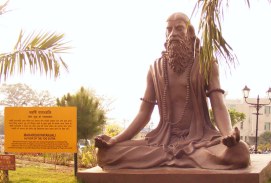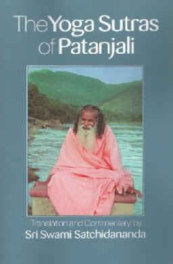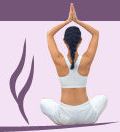Yoga and Drug Free Living
Yoga is wonderful. It clears up most health problems.
Pathanjali Maharishi's contribution
Plenty of people were initiated into the practice of Yoga by the first seven sages and this continued as tradition & lineage for several centuries.
Mostly Yoga was taught in Gurukuls (monasteries) through Guru-Sishya Paramparya (Master-Disciple Tradition) in India. People were practising different forms of Yoga in different places and there was no central authority or common text.
That's where Pathanjali Maharishi pitched in. That great sage compiled the art and science of Yoga in a very systematic way known as 'Yoga Suthra'.
Nothing new was created with the Yoga Suthra, but the ancient practices were summarized in an extremely organized and concise way.

A depiction of Pathanjali Maharishi
(Image courtesy - Alokprasad)
Yoga Suthra contains 196 Suthras, each Suthra is just a line of few words. So, 196 Suthras = 196 lines...so simple ?
But each line carries tremendous meaning - to explain a line it requires few pages of effort !
196 Suthras are further classified into four chapters or Padhas namely,
1. Samadhi Padha
2. Sadhana Padha
3. Vibhuthi Padha
4. Kaivalya Padha

Here is a valuable book - 'The Yoga Sutras of Patanjali' which provides a complete manual for the study and practice of Raja Yoga, the path of concentration and meditation.
The Sutras are presented here in the purest form, with the original Sanskrit and with translation, transliteration, and commentary by Sri Swami Satchidananda, one of the most respected and revered contemporary Yoga masters.
In USA, get this book here.
Yoga Suthra codifies the royal (Raaja) yoga practices, presenting them as a eight-limbed system (Ashtanga Yoga).
A Suthra in Sadhana Padha says, "yama niyama asana pranayama pratyahara dharana dhyana samadhi ashtau angani".
This Suthra lists the eight limbs of Yoga as,
- Yama and Niyama (moral and social conduct)
- Asana (various body postures)
- Pranayama (regulation of breath)
- Prathyahara (internalization of the senses of perception)
- Dharana (concentration)
- Dhyana (meditation)
- Samadhi (ultimate state of self realization)
Further Yama and Niyama are explained by the subsequent Suthras as follows:
"ahimsa satya asteya brahmacharya aparigraha yama"
- ahimsa - non-violence
- satya - truthfulness
- asteya - non-stealing
- brahmacharya - living in awareness of the highest reality, continence
- aparigraha - non-possessiveness
"shaucha santosha tapah svadhyaya ishvarapranidhana niyama"
- shaucha - purity of body and mind
- santosha - contentment
- tapah - training the senses, austerities
- svadhyaya - self-study, reflection on sacred words
- ishvarapranidhana - surrender of fruits of practice to God
The above Suthras are projected here to make the reader visualize the abundance of message in Yoga Suthra.
For complete Suthras and explanations...
click here to access an excellent website
Back to top
From Yoga and Drug Free Living to Drug Free Living Home
Like This Page?
